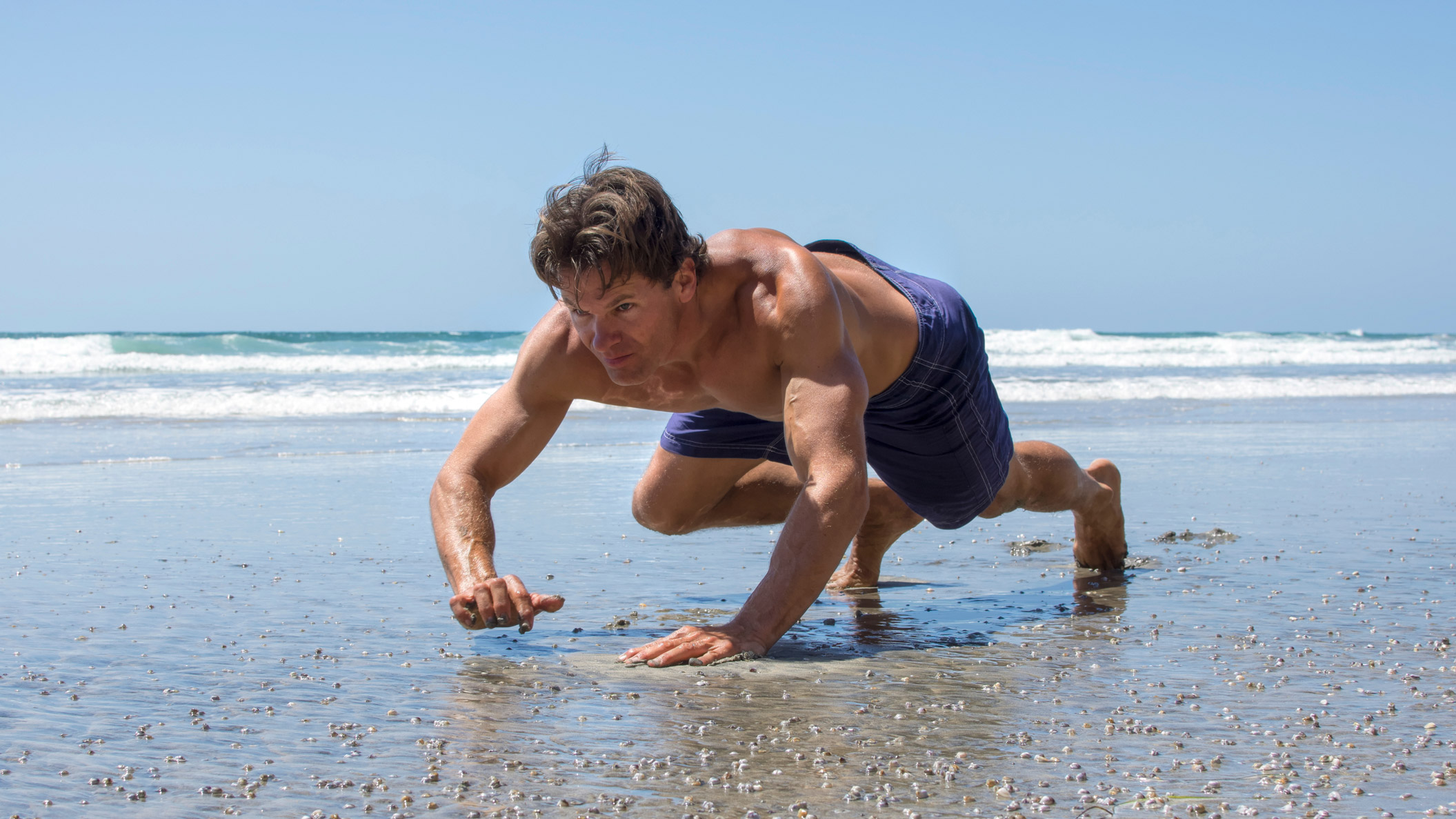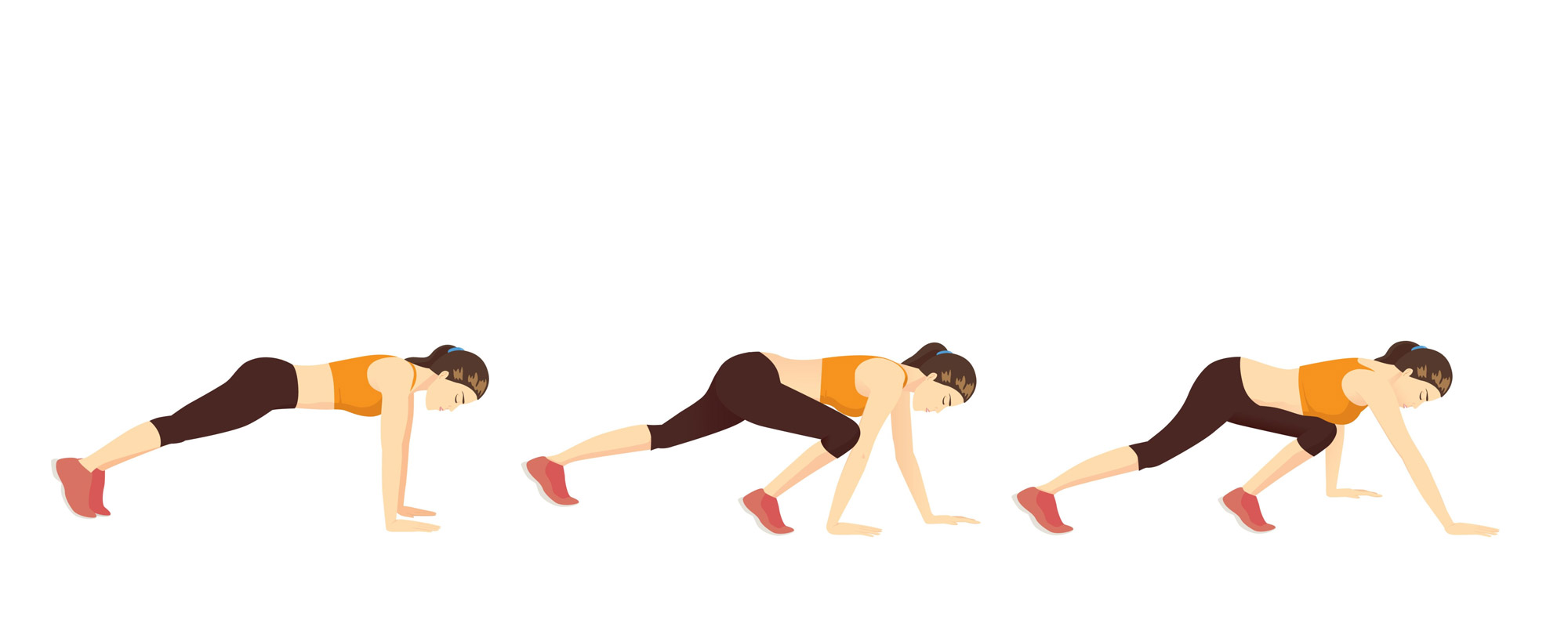Bear Crawl: How to do this underrated, equipment-free core exercise
Crawl your way to better fitness

Despite its childlike name, the bear crawl is a serious contender when it comes to developing a strong core, improving functional movement, and increasing overall fitness levels. You also don't need any fancy equipment or a gym membership to reap the benefits.
Whether you're a fitness junkie looking to add a challenging twist to your usual workouts, or a beginner seeking a simple yet effective exercise, the bear crawl has something to offer all. If you're tired of the best treadmill or exercise bike in the gym and looking for a new challenge, the bear crawl engages various muscle groups at once including your core, shoulders, arms, and legs, making it a total body workout that can enhance your strength, endurance, and coordination. Unlikely to be a recommended exercise thrown at you by one of the best smartwatches, but a great one to learn.
With help from NASM-certified fitness coach, Wendy Batts, we delve into the proper technique for performing the bear crawl to maximize its impact while minimizing the risk of injury. We'll also explore the numerous benefits this exercise brings to your fitness journey, from sculpting a solid core to improving your posture and balance.

Wendy Batts, MS, is a regional master instructor for the National Academy of Sports Medicine (NASM) and an assistant professor in exercise science programs at Pennsylvania Western University. She is also a consultant for companies in the fitness, performance, and wellness space.
How to do a Bear Crawl: step-by-step
Bears crawls are very straightforward, but can get a little trickier when you emphasize doing the movement with proper form and technique. Batts has provided step by step instructions on how to successfully perform bear crawls.
- Start on hands and knees, with hands directly under the shoulders, knees directly under the hips so they’re flexed approximately 90 degrees, and toes flexed/pulled under, so they’re pointed straight down into floor.
- While keeping a neutral spinal position – not overly arched or overly rounded – push away from the floor to stabilize the shoulders and lift the knees so they’re hovering one to two inches off the floor.
- Keeping your hovering position, simultaneously reach forward with one arm and the opposite leg. Repeat this opposite arm and leg motion on the other side to crawl forward, making sure hand and foot contacts are soft.
- Maintain posture throughout the movement. Keep the spine and hips square to the floor, avoiding rotation. Try not to let the head drop, back arch or round, or shoulders sag. Make sure toes point straight down and fingers always point straight ahead.
Variations
“Once you get the hang of the forward crawl, as a progression, you can incorporate different directions and planes of motion into the mix,” says Batts. Some examples include the following:
- Backward crawling: reverse the opposite arm/leg action and crawl backward to return to the starting position.
- Lateral crawling: using the same opposite arm/leg action, reach laterally with the arms and legs to crawl sideways; reverse the pattern to return to the starting position.
- Transverse/diagonal crawling: using the same opposite arm/leg action, reach at a 45˚ angle with the arms and legs to crawl diagonally; reverse the pattern to return to the starting position.
- And, once you’ve mastered multi-direction crawling, you can add resistance for even greater challenge. One way to do this includes wearing a weight vest to increase the total weight you have to move around.
Benefits of bear crawls
It turns out that incorporating bear crawl into your workout repertoire has a myriad of benefits beyond racking up the 'calories burned' counter on your best fitness tracker.
First of all, bear crawls are underrated when it comes to core strengthening exercises. As you move across the floor in a crawling position, your core muscles, including the rectus abdominis, obliques, and deep spinal stabilizers, must work together to maintain stability and prevent your lower back from sagging. The unique movement pattern of bear crawls challenges your core in ways that traditional exercises often can't match.
What is this unique movement pattern? Well, bear crawls fall under the category of quadrupedal movement training (QMT) and according to a study published in the Journal of Strength and Conditioning Research, QMT is effective in improving overall movement quality and dynamic balance. Research in the Human Movement Science journal also shows that QMT enhances active joint range of motion or mobility, in the shoulders and hips, making bear crawls a valuable exercise for improving flexibility and mobility.
Get daily insight, inspiration and deals in your inbox
Sign up for breaking news, reviews, opinion, top tech deals, and more.
“The reciprocating cross-body patterning also challenges your abdominal and back stabilizing muscles in unique ways due to the rotation that occurs with each simultaneous reach of the opposite arm and leg,” explains Batts.
“All crawling patterns are great for challenging and developing our shoulder and scapular stabilizing muscles,” she adds, “However, backward crawling movements in particular are fantastic for shoulder health, stability, and muscle development because they help drive and reinforce upward rotation of the scapulae (shoulder blades)."
Lastly, as we touched on briefly before, you can’t beat the simplicity of this move. The exercise requires no equipment, relying solely on your body weight, making them accessible to anyone, anytime, and anywhere.

Common mistakes
Avoiding bear crawl blunders is important if you want to experience the full benefits of this dynamic exercise. We've uncovered the most common mistakes made during bear crawls so that you can steer clear of them.
- Going too fast at the expense of proper form and technique
The bear crawl can be as challenging as you want to make it. Moving slowly and being intentional with each step, in order to minimize ancillary movement of the hips and torso, really ups the ante for this exercise.
- Attempting to do too much, too soon
It’s okay to gradually introduce bear crawls into your training regimen. A great place to start is to incorporate them into your warmup process prior to a strength training or cardio session by doing a few time-or distance-based sets—amounting to about 20-30 seconds of crawling each time.
- Not keeping the body low enough, or keeping the hips too high
As fatigue sets in, or attention to form wanes, it’s common for the hips to stick upwards during the crawl, which takes stress off the core and upper body. Ideally, you want to maintain a low body position, as if you’re trying to crawl under a low table.
- Allowing the lower back and/or shoulders to sag
This mistake puts excessive strain on the lumbar region, increasing the risk of injury and minimizing the engagement of your ab muscles. Maintaining a stable and level position is essential to target the intended muscle groups and develop optimal strength and stability throughout the body.
- Improper coordination between the upper and lower body
You want to move the opposite arm to leg while performing bear crawls as opposed to the same side arm and leg. This latter form hinders full-body engagement and reduces the effectiveness of the exercise. The opposite arm and leg movement is essential to challenge and improve overall stability, coordination, and functional strength.
Hopefully, you feel fully equipped to get down on all fours, engage those core muscles, and bear crawl towards a stronger, more resilient you. Just remember, while the bear crawl is a powerful addition to your fitness arsenal, it's essential to mix up your exercises and workouts regularly to achieve the best results and keep your progress moving forward. Other exercises like the plank push-up are great ways to train your core and shoulders to achieve similar results.
Jessica Downey is an experienced health and fitness writer with a particular interest in running. A former staff writer on Fit & Well and contributor to Runner's World, Jess is a PPA accredited magazine journalist born and raised in Scotland. When back home, she can be found running by the sea, swimming in it, or up a mountain somewhere.
